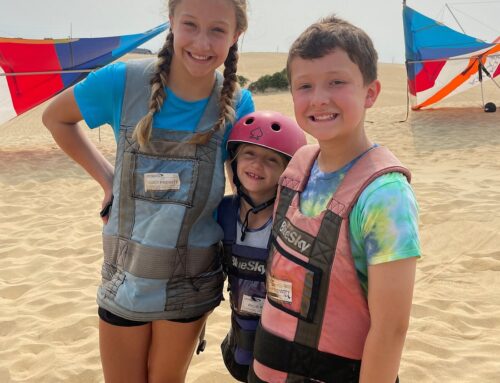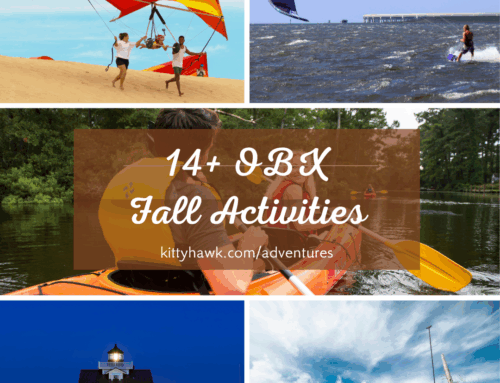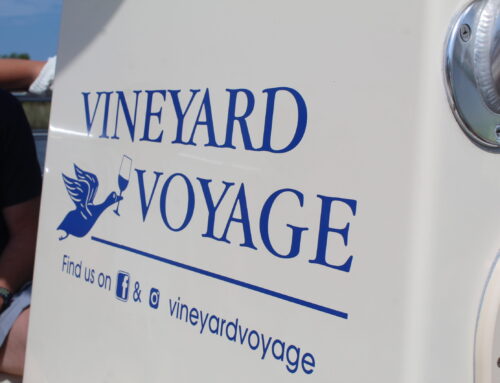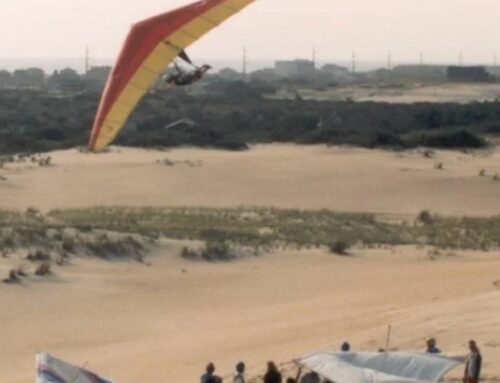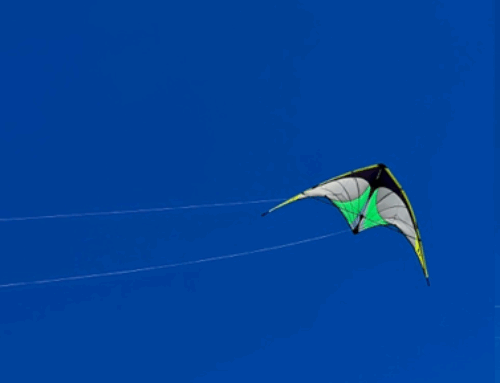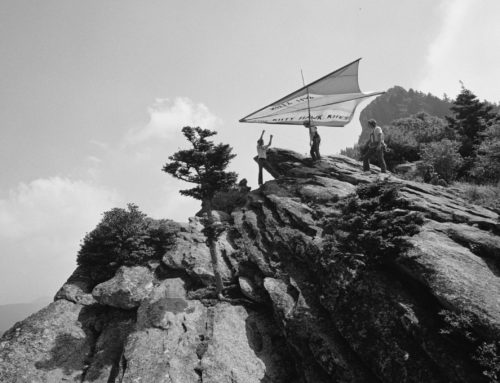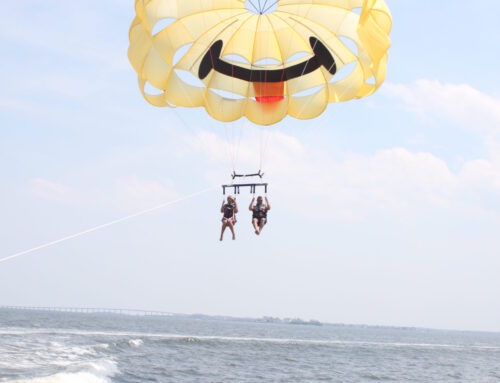Making Sure You Live to Fly Another Day
On Sunday, May 31st we held our fourth Free Flight Q&A over Zoom. Our Outer Banks flight school manager and assistant manager, Wolf Gaidis and Billy Vaughn, led Sunday’s chat. They covered the type of gear you need to have the safe, fun flights. If you missed Sunday’s session, keep reading to learn what you need to gear up.
Most Important Gear
These pieces of gear are necessary to fly any glider or wing. They will keep you safe and comfortable no matter what type of flying you like to do.
- Helmet
- Harness
- Parachute
Helmet
When looking for a free flight helmet, there are several things you have to take into consideration. First, it has to protect your head and neck. So make sure you are looking at helmets designed for high impact. Snow boarding helmets may be a good substitute if you already have one. Another factor that is especially important for hang gliding pilots is weight. When holding your head up in the prone position, a lightweight helmet will help make this much easier than a heavy helmet like a motorcycle or other DOT rated helmet. There are some design and functionality choices to make when it comes to your helmet as well.

Full-Face Helmets
A full-face helmet like this one will protect your chin and jaw from impact. Many also have a visor to protect your face from the cold and protect your eyes in the wind.
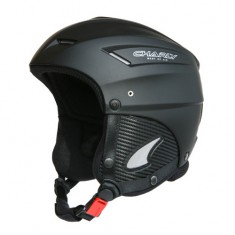
Open-Face Helmets
Open-face helmets, on the other hand, are more lightweight and compact. This makes them easier to travel with.
Depending on your school, instructor, or flight location, you may need a radio headset. Some helmets have these built-in. Talk with your instructor to ensure you have the right helmet for you and the type of flying you’ll be doing. Your instructor will also be able to recommend reputable brands and help you find the right size.
No matter which helmet you choose, we strongly recommend buying NEW. In order to effectively protect your head, your helmet must be well taken care of and fitted to you. Try on a helmet before you buy it, if possible. Your helmet should slide on and off with little resistance but should not rattle or move once on your head. And once you have your helmet, take good care of it. Throwing it around and piling stuff on top of your helmet can damage the foam and shell, making it ineffective at keeping you protected.
Harness
While most schools and clubs will have harnesses to use or rent, we recommend purchasing your own harness. By having your own personal equipment, you can become a better pilot. Using the same harness will make your take-offs and landings more consistent. It also makes it possible to compare gliders and wings more objective by removing a variable. Your harness should fit you well and be comfortable. There are a couple different styles of harnesses to use, depending on the type of flying you want to do.
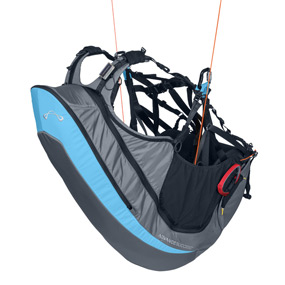
Paragliding Harnesses
Paragliding harnesses come in a variety of different styles. You can find lightweight harnesses, reversible harnesses, pod harnesses, and more. Consult with your instructor for guidance on reputable harness brands. They will also be able to recommend the appropriate style harness for your skill level and flying ability. Keep in mind that your harness should provide you with good back support, especially when you land.
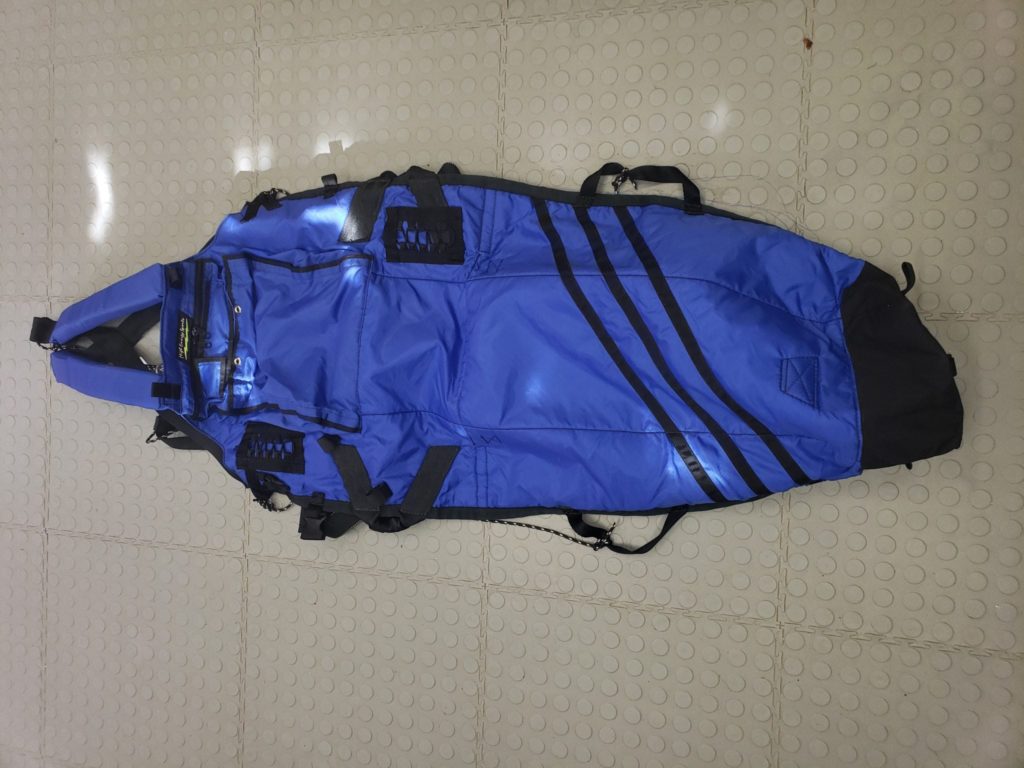
Hang Gliding Cocoon Harnesses
A cocoon harness is open in the back. When launching the foot of the harness is held up with a buckle (or in the mouth), then released once in the air and stepped into. Cocoons are preferred for many tandem hang gliding pilots and instructors. They may also be preferred when flying in hot weather areas.
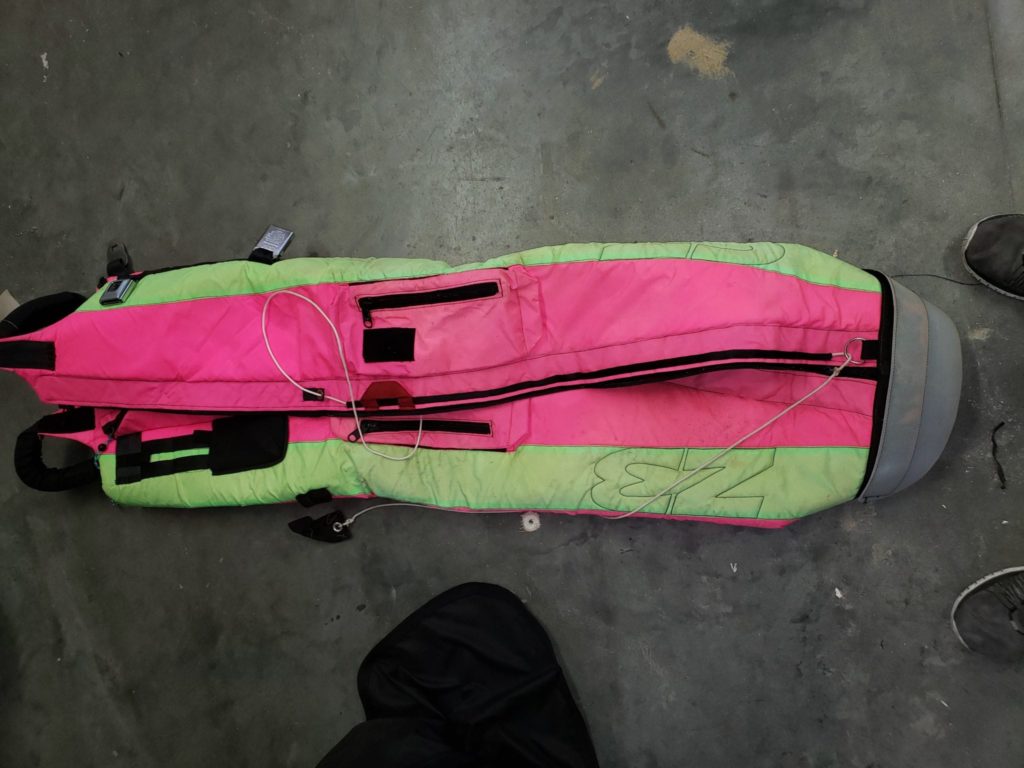
Hang Gliding Pod Harnesses
Pod harnesses are worn like a jacket and zipped up the front. The foot of the harness is left loose behind the pilot on launch, then stepped backwards into once flying. Because they are fully enclosed, they keep the pilot warmer in high altitude and cold weather conditions.
When choosing your harness, talk with your instructor. They will be able to assess your skill level and flying ability and pair you with the appropriate harness. They should also be able to help you order the appropriate size harness for you. As with helmets, a harness is most comfortable when it fits you properly.
Parachute
A parachute is required for any flights above 500 feet. When purchasing your chute, we recommend looking for one with a paraswivel. This will prevent the lines from getting tangled when you through your chute. We also recommend buying NEW. You want a parachute that you know works and is well taken care of. Reserve parachutes are different between hang gliding and paragliding, so make sure you have the right type of chute. Newer styles of paragliding chutes are steerable, so you are able to avoid obstacles like buildings or powerlines.
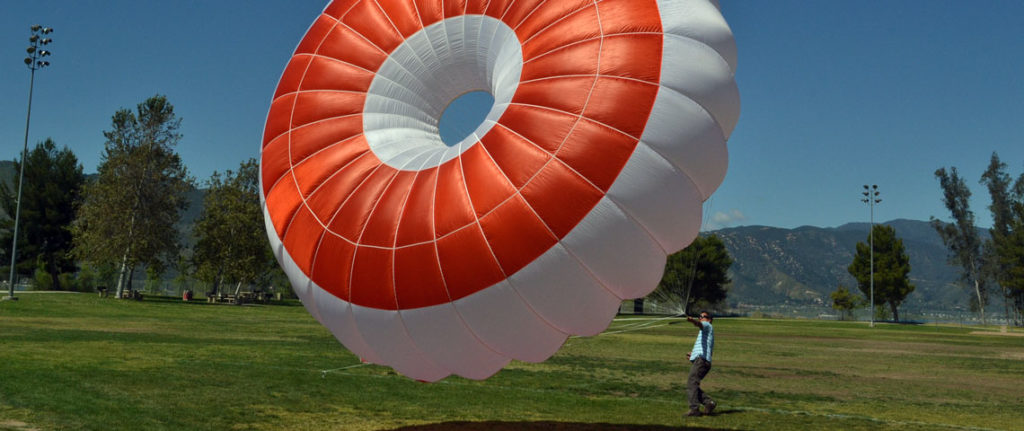
Also remember that size matters. Pick the appropriate parachute for your weight. Each parachute will list a safe weight range. A bigger chute will take longer to open, but will slow you down more for a softer landing. A smaller chute will open faster and take up less space in your harness, but won’t produce as much drag.
Having a parachute is only half of the job, though. If you don’t know how to use it, it won’t be able to protect you during a free fall. Attend a parachute clinic that will require you to pull your chute. If you can’t find a clinic near you, speak with your instructor. They may have access to equipment that can simulate a fall safely. No matter what, practice pulling your parachute before you need to use it. Once you pull it, you need to repack your chute. Again, speak with your instructor. They will be able to teach you how to repack it appropriately. This should be done at least once a year, at the beginning of your flying season.
Extra Gear
Any gear in addition to the pieces listed above, are extra and may be unnecessary. When you are comfortable with your gear, you can start to add the extras. The next pieces of gear that we recommend include: wheels for your base tube, a variometer, and a radio. This will depend on your flight location and the type of flying you are doing. For paragliders,
Only add one new piece of equipment at a time. Adding more than one thing at a time can become a distraction while you are flying.
Summary
As repeated above, your instructors are a great resource to find the best gear suited for you. Your gear should fit well and be comfortable. When in doubt, BUY NEW. You can’t put a price on safety. We commonly say, “Buy it nice, or buy it twice.”
For all of your equipment, including your wing or glider, don’t rush to buy gear above your skill level. Be sure to buy the glider you can fly, not the glider you want to fly. This will only keep you stuck on the ground and restrict your advancement.
Next Session
Our next Free Flight Q&A will be held on Sunday, June 14th at 3:00 PM. We will cover how to stay current with your skills. Registration link to come soon.

